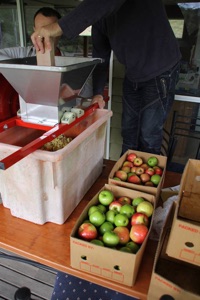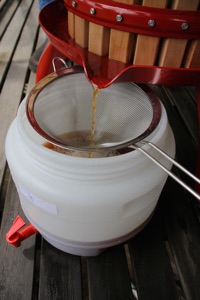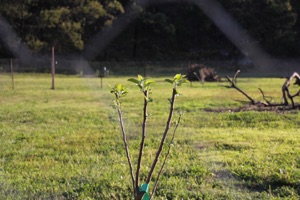is named in the dialect of Swabia, Bavaria. It’s pronounced "mosh-t" in Swabian dialect but in High German, it would be named Apfelwein, or Apple Wine, it’s the same thing (but ours is better).
Traditional German Moscht is not carbonated, and most of ours is not. However,
we are experimenting with different styles and have produced some limited runs
of carbonated Moscht, which we achieve the natural way by adding a little sugar
late in the fermentation process and swiftly bottling to keep the carbonation in.
Personally, we prefer the still variety, but that may change over time.
Each batch of Moscht is unique, with flavours derived from the specific mix of
apples, that themselves change based on their growing conditions. For most
Moscht it's better to use smaller and more tart fruits, with sweeter fruits added
to balance the flavour. As a result, each batch of Moscht will be unlike any other,
we look forward to seeing what we can create!
Making Moscht is a relatively simple process, but one that we take great joy and
extract a lot of excitement from.
First we wash and crush the apples, producing a rough pulp that makes it easier
to squeeze and extract the juice from.
Then we load the pulp into our press and spend a few hours compressing,
releasing, pressing and drawing the juice out of the pulp.
The juice collects in a fermentation vessel. Because we operate on small unique
batches we only need a moderately sized 15 litre fermentor.
We add a little commercial yeast to the juice and keep it at a moderate
temperature for up to 8 weeks, allowing a full flavour to develop as all the sugars
in the juice are slowly converted to alcohol.
The final product we filter or carefully decant to leave the majority of the
sediment behind, and the alcoholic Moscht is bottled.
The bottles are left to cold‐lager and condition, this is where their final flavour
develops.
Finally, we drink the Moscht with gusto!
There are, of course, variations that we will introduce over time that will
contribute to a unique product that we can truly call our own. Some options
we're experimenting with are:
○ Cuveeing ‐ This is a process first developed in France and also traditionally
used in Germany, where the pulp is left out and stirred to allow the apple
flesh to fully brown before pressing the juice. This contributes a surprising
note and character to the Moscht. We're keen to develop this one further!
○ Yeast-free ‐ While not truly yeast free, this variant uses no added yeast
whatsoever, instead the yeasts that are free floating in the air are captured
to impart a truly unique flavour to the Moscht. The yeast varieties vary
strongly between locations, so this method yields a product that cannot be
replicated anywhere else, although then lower concentrations of yeast
available mean that the Moscht takes considerably longer to ferment, up
from 8 weeks to often more than 16. This, we hope, will be our preferred
method, once we school ourselves to the appropriate level of patience.










